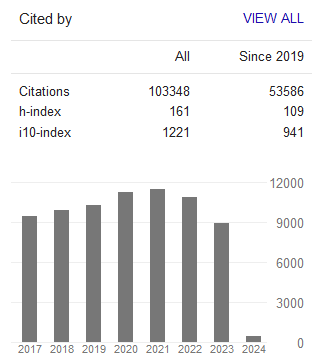Using Human Resource Management Practices to Predict Quality Service Delivery: Case of Public Secondary Schools in Kenya
- Christine Mutiso
- James Kilika
Abstract
With rapid changes in the business environment, organizations are increasingly looking at their human resources as a unique asset that can provide sustained competitive advantage. Human resources are considered by many to be the most important assets of an organization for sustaining competitiveness through their products and services. It has been observed that very few employers are able to harness the full potential from their human resources. In view of this, this study examined the relationship between Human Resource Management Practices and Quality Service Delivery in the education sector in Kenya. The research was done as a case study of government sponsored secondary schools based in in Taita-Taveta County. The conceptualization in the study was guided by the various strategic human resource theories, models and the servqual model. The results show that the regression model used is significant (F=23.499; p<0.001) and that the HRM practices as measured using the five practices explain approximately 45% of the variation in service quality delivery in the education sector in Taita-Taveta county in Kenya (R2=0.448). The results show that hypotheses one, four and five of the study are supported (β=.405, p<.000;β=.321, p<.000; β= .181, p<.001 respectively) while hypotheses two and three are not (β=-.113, p=.170; β= -.508, p=.612 respectively). The study concluded that HRM practices in the Education sector in Kenya is still undertaken with an inclination towards the traditional personnel management perspective. The study called on future research to investigate the same phenomenon using an expanded list of HRM Practices indicators and pay attention to senior executives’ perspective on the strategic role of human resources in the sector.- Full Text:
 PDF
PDF
- DOI:10.5539/ijbm.v12n10p121
Journal Metrics
Google-based Impact Factor (2023): 0.86
h-index(2023): 152
i10-index(2023): 1168

Index
- Academic Journals Database
- AIDEA list (Italian Academy of Business Administration)
- ANVUR (Italian National Agency for the Evaluation of Universities and Research Institutes)
- Berkeley Library
- CNKI Scholar
- COPAC
- EBSCOhost
- Electronic Journals Library
- Elektronische Zeitschriftenbibliothek (EZB)
- EuroPub Database
- Excellence in Research for Australia (ERA)
- Genamics JournalSeek
- GETIT@YALE (Yale University Library)
- IBZ Online
- JournalTOCs
- Library and Archives Canada
- LOCKSS
- MIAR
- National Library of Australia
- Norwegian Centre for Research Data (NSD)
- PKP Open Archives Harvester
- Publons
- Qualis/CAPES
- RePEc
- ROAD
- Scilit
- SHERPA/RoMEO
- Standard Periodical Directory
- Universe Digital Library
- UoS Library
- WorldCat
- ZBW-German National Library of Economics
Contact
- Stephen LeeEditorial Assistant
- ijbm@ccsenet.org
